NaNoTeaMo, Day 26: “Obligatorily Weird Thanksgiving Tea Post”
I think it’s mandatory that if one is going to post a blog on Thanksgiving Day, they actually have to give thanks to something or someone. And, trust me, I will do just that. But not right this second. You see, I have a weird Camellia species to talk about first.
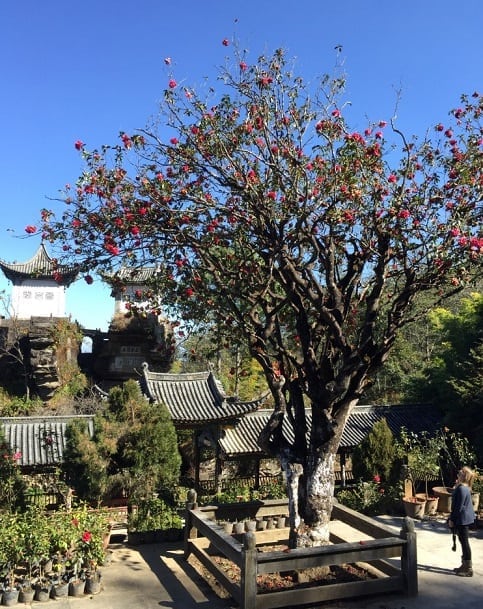
Camellia taliensis is one of several species of Camellia, along with our very favorite tea plant – Camellia sinensis. I first learned of its existence through fellow weird tea hunter, Greg “Norbu Tea” Glancy. The species came up in discussion when we were contemplating Ya Bao, a white tea that wasn’t really “tea” at all.
If this all sounds confusing, let me break it down. Tea comes from one flowering plant, the Camellia sinensis. Any hot beverage produced from any other plant can’t be considered true tea. There are two (maybe three?) distinct varieties of Camellia sinensis; assamica and the smaller-leafed sinensis.
Yes, I know how stupid that sounds – naming a variety of a plant after that plant – Camellia sinensis var. sinensis. That’s like giving your child a first name that is their last name, like Frederick Fredrick. But I digress . . .
Because there are many different species of Camellia out there besides sinensis, particularly in Yunnan province, China (the oft-touted birthplace of tea), it’s safe to assume that other species’ leaves were used to produce other tea-like beverages as well. Species Camellia taliensis was used mainly to create puerh. But occasionally, there are happy accidents.
In the Lin Cang area of Yunnan province, some mushroom gatherers were out in a forest, and they noticed that some taliensis trees were producing young leaves. They gathered said buds, but by the time they made it back home, the leaves had oxidized. Instead of throwing away the refuse, they instead chose to fully process them into a black tea-ish thing. And thus, Lao Shu Dian Hong (Old Tree Yunnan) came to be.
Seven Cups’ Austin Hodge must’ve called in some pretty big favors to find out about this li’l jewel of a freak-ish tea.
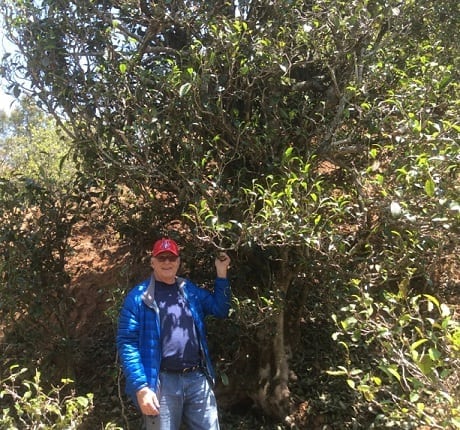
It landed in my mail box a year ago through the esteemed Jo “A Gift of Tea” Johnson. She didn’t tell me what the package was, or what the tea was going to be. She just assured me that I’d like it. And I did!
I just didn’t think it’d take me a year to get around to writing about it.
Sidenote: The version of this Dian Hong I’m talking about is from the 2014 harvest, not the April 2015 harvest that’s currently available on the Seven Cups site.
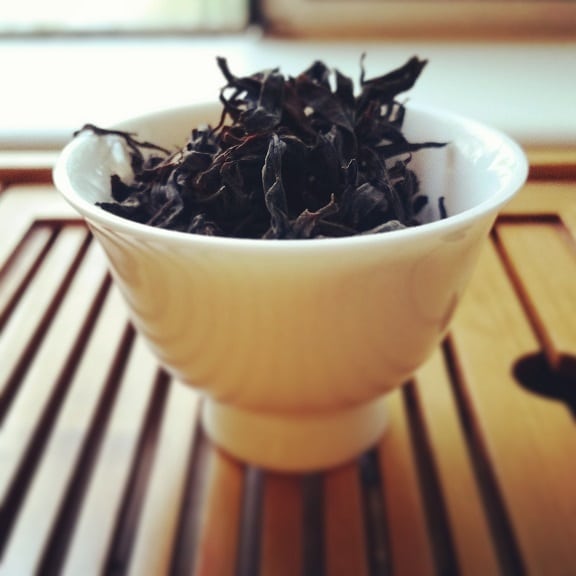
The leaves looked about as wild as advertised. They were purple-to-black with varying twisty shapes. There was no uniformity to their appearance, and the aroma they gave of kind of reminded me of chocolate and liquor. There was a tart bite to the scent as well, like someone slipped a hibiscus petal into the fray for kicks.
For brewing, I went with the instructions on the Seven Cups site pretty much to the letter. A three minute steep in boiled water. I used a standard teaspoon measurement of leaves and plopped ‘em in a trusty 6oz. gaiwan.
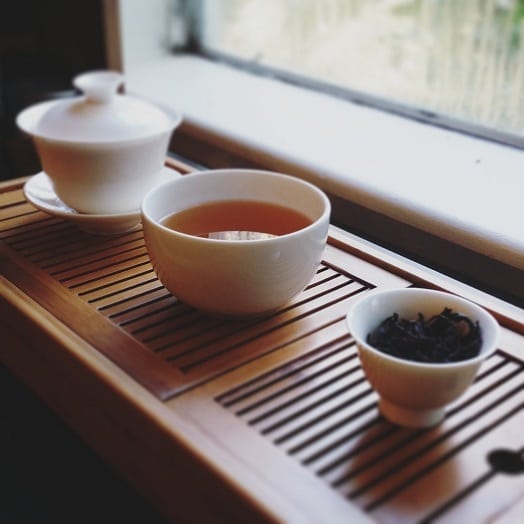
The tea’s liquor color was just as the profile described it – golden, but a far deeper gold than I expected. I suppose I should’ve anticipated some boldness given its Dian Hong processing. All similarities to regular Yunnan black teas quickly vanished on taste. This was certainly its own beast. The introduction was familiar enough with its malty/woody forefront. But then things took a turn for the weird somewhere in the middle. A good weird, though, I assure you.
There was an undeniable (and undefinable) tartness in the top note that I usually found in Dan Cong oolongs. I ran into it one other time in a purple cultivar-produced Yunnan black tea from the Dehong region, but this was a bit bolder. The finish was both sweet and graceful.
And now for the thankful part.
I’m thankful for friends that introduce me to weird new teas made from weird new species. I’m thanking for weird tea vendors who go to these locations to track down these weird teas. And I’m thankful for mentors that bring them to my doorstep, even when I’m not expecting it.
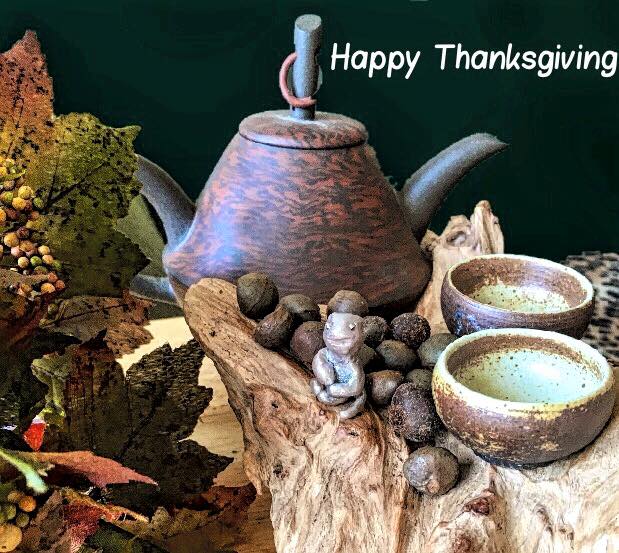
Now, if you’ll excuse me, I have to thankfully fill my belly with turkey, along with family members I’m thankful to have. Even the weird ones.
Leave a Reply to lazyliteratus Cancel reply